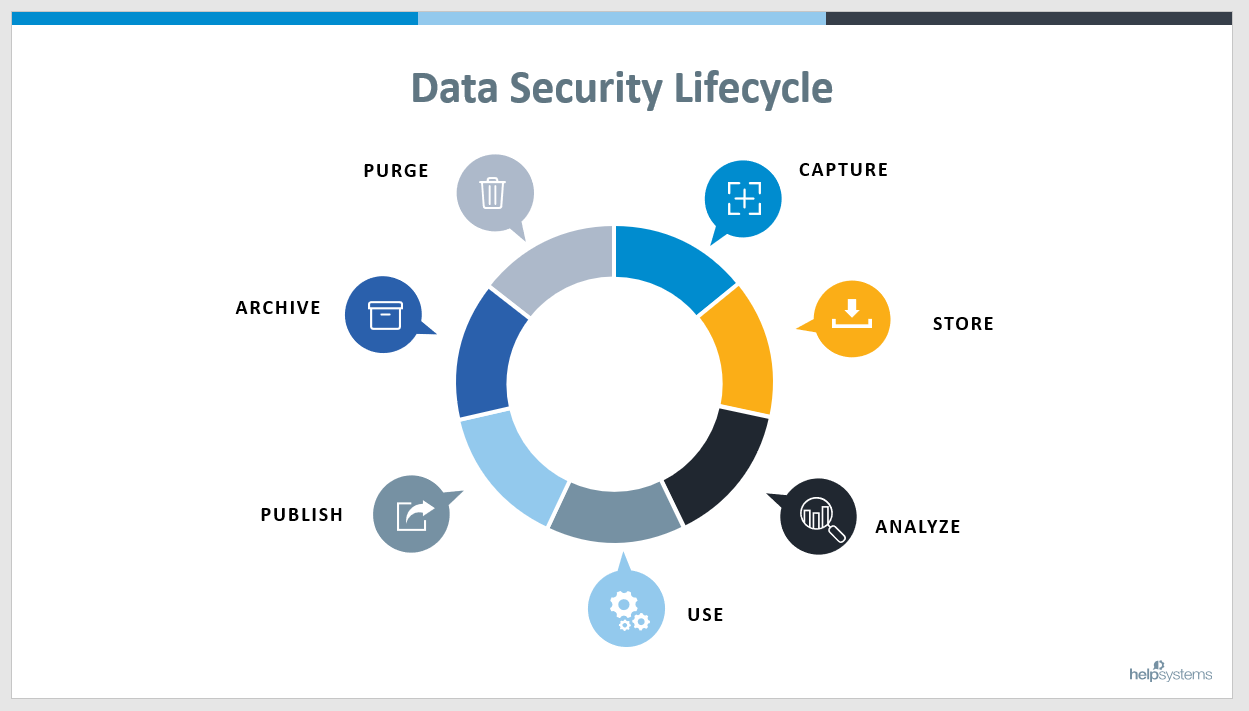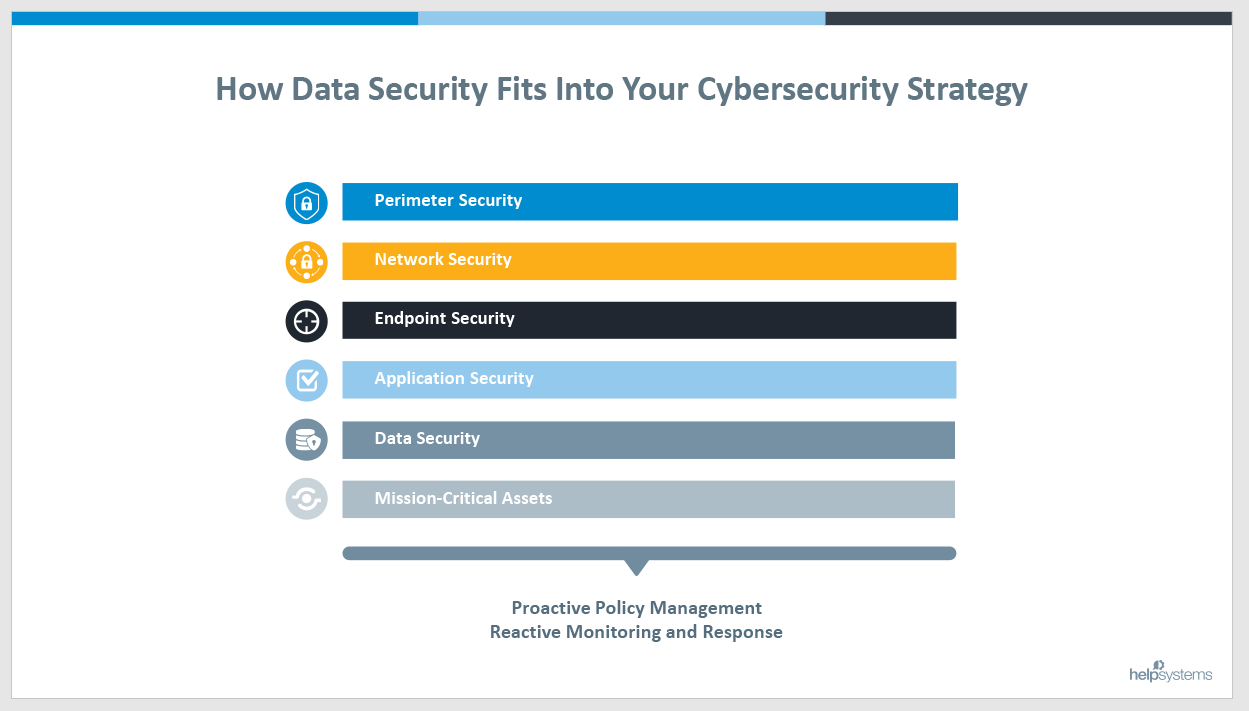Boldon James. What is Data Security?
What is Data Security?
Generally, data security is described as all that surrounds the protection of digital data from destructive forces or unwanted actions of unauthorized users, such as from a cyberattack or data breach. By this overarching definition, the one thing data security is not is a singular software solution that claims to “do it all.” Rather, data security is a mindset and a coordinated, concrete set of efforts and software solutions deployed throughout an organization designed to comprehensively protect the sensitive data transmitted each day at all stages of its journey.
Why Data Security Matters
If your data is vulnerable to cybersecurity thieves, or even to human error, be prepared to pay – financially, with personnel resources, and in rebuilding your reputation should a breach occur from within or outside of your enterprise. According to a study by IBM, the average cost of a data breach is estimated at $3.92 million. Industries that are highly targeted for their valuable personal information like finance, healthcare, and retail can see an even higher toll. No matter your industry, if you store or transfer identifiable, sensitive data, your organization is an attractive target.
What is the Lifecycle of Data?
As you can see from the illustration below, the data lifecycle has seven distinct stages operating as a continuous, not static, process. To ensure comprehensive data security, a layer of protection should surround each stage for end-to-end security.

Where Does Data Fit Within Corporate Security Framework?
As you can see, data security forms the basis from which all security efforts radiate. If the data is not secure from the start, securing applications, endpoints, networks and the perimeter don’t really matter. To that end, supporting all these security measures needs to be an equal balance of proactive and reactive actions to ensure the mission-critical assets around your enterprise are safeguarded.
With data so valuable, surprising research from Verizon shows data security comprising a mere seven percent of the IT budget. Read on for details on where IT budgets could focus on for better data security.

What are the Barriers to Data Security?
Today’s organizations exchange data at a larger volume and faster pace than ever before, and they do so in complex, hybrid IT environments. In addition, the remote or partially remote workforce that emerged from the COVID-19 pandemic looks like it will be here to stay in some fashion for many enterprises for some time – increasing the points at which your data is vulnerable. Gone are the days of simply crossing fingers and hoping for the best with an emailed attachment. Today’s data transfers can be massive, complex, sent to myriad locales, and constantly at risk of interception, manipulation, and human error due to the value of that information.
This data is also subject to more stringent privacy and compliance standards designed to protect individuals as well as enterprises. Organizations that fail to secure data properly face mitigation costs that can be both financially and reputationally crippling. Human error, cybercrime, and inadequate technology all play a role in why data may be insecure. The right data security strategy, however, addresses all these factors. An organizational emphasis on data security, coupled with the robust, integrated, and complimentary software solutions, can deliver the end-to-end protection needed.
Address Data Security with a Suite of Solutions
For a state-of-the-art data security position, you’ll want to ensure your selected solutions tackle the following security measures:
1. Understand and classify files that may contain sensitive data
2. Detect and prevent leaks of this sensitive information outside of your organization
3. Secure and protect sensitive data that is shared both inside and outside your organization
In addition, solutions should be able to be integrated and deployed quickly and in a user-friendly manner to both encourage adoption and reduce the workload of staff and impact on productivity. By protecting data throughout its lifecycle, you can significantly reduce risk.
1. Understand and Classify Your Data
The basis of a solid data security strategy begins by identifying and classifying what type of information you need to protect, including critical unstructured data such as intellectual property. By taking this step, you lock down the base control and management parameters needed to help ensure compliance.
Whether you need to protect public, financial, personally identifiable information (PII) information, or more, establishing and classifying data to be protected sets the foundation for the additional security layers needed to continue protecting data along its journey.
2. Detect and Prevent Data Leaks
It’s going to happen. An employee will accidentally send sensitive data to the wrong person, or perhaps transfer an otherwise “safe” document that contains hidden metadata that could compromise your compliance or privacy standards. Any number of scenarios can put your organization at risk unless you have a solution in place to detect and sanitize data in real time, before it’s sent to the cloud or to third parties, before a breach occurs.
3. Secure and Protect Your Data
After you’ve ensured your data is identified and classified, scrubbed of potentially sensitive data, and approved for sending by authorized users that data now needs to be protected as it is sent or transferred for true end-to-end data security. One of the easiest ways to do so is through a managed file transfer (MFT) solution. MFT locks down your data at the point it is most vulnerable – when it is being used by others and while traveling to its destination into unmanaged domains, devices, or applications.
Layering data security solutions is a proactive approach to protecting your sensitive data. Read on for more details.
Layered Security Helps Ensure Data Security
Data security is only as solid as the various elements that support it. Layering robust, proven solutions to ensure your sensitive data remains secure from start to finish is a proactive approach. HelpSystems’ suite of data security solutions provides the range of data protection needed, including identification and classification, data loss protection, secure file transfer, and more.
Source: Boldon James

